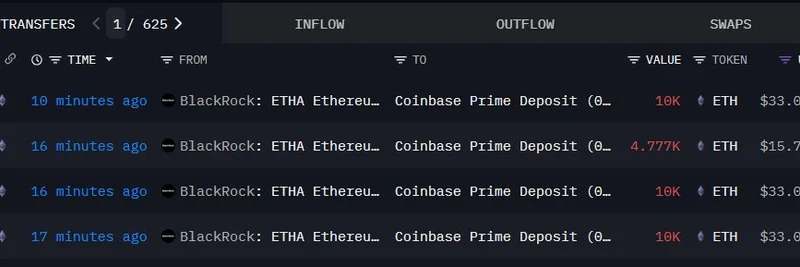The RION token with contract address 0xc0c240c870606a5cb3150795e2d0dfff9f1f7456 has recently appeared on the BNB Chain (Binance Smart Chain). Although it shares its name with a more established project on the Aptos blockchain—Hyperion's RION—there are important nuances and distinctions to consider.
What is RION on BNB Chain?
The RION token on BNB Chain is a BEP20 asset, with a total supply of 100 million tokens. Its emergence is tied to the Hyperion platform, a high-performance decentralized exchange (DEX) originally native to the Aptos blockchain. The core function of RION is to serve as a utility token facilitating payments, staking, rewards, and settlement within the Hyperion ecosystem.
However, the RION token on BNB Chain currently exhibits very limited on-chain activity—just a handful of holders and minimal trading volume. This suggests that it may be a newly bridged or deployed asset, perhaps intended for cross-chain compatibility or serving a minor role compared to its mainnet presence on Aptos.
Core Features and Dual-Token Model
Hyperion’s ecosystem leverages a dual-token model for platform operations and governance:
- RION (Utility Token): The main, transferable token for transactional use, staking, and incentives.
- xRION (Governance Token): A non-transferable token you receive by staking RION. It enables participation in governance (DAO voting), offers special launchpad quotas, and grants eligibility for ecosystem rewards. The amount of xRION and its governance weight can depend on how long you lock up your RION for staking.
This system is designed to encourage active, long-term participation rather than speculative holding.
Tokenomics and Distribution
Hyperion has published a comprehensive allocation plan to ensure ecosystem balance and sustainability:
- Liquidity Incentives: 30% of total supply to boost user participation and on-chain liquidity.
- Protocol Treasury: 22.9% for long-term development and platform sustainability.
- Team & Advisors: 20% to align interests and ensure continued project growth.
- Public Distribution: 9% released via sales or exchange listings to grow community access.
- Airdrops: 5% (5 million tokens) dedicated to early adopters—Hyperion’s Genesis Airdrop being a prime example.
- Community Incentives: 5% to encourage broad ecosystem engagement.
- Investors: 8.1% to secure strategic partners.
Token rewards are distributed based on user activity, not just passive holding, to promote a vibrant and healthy community.
Unique Launch Mechanism: Bonding Curve IDO
RION’s token launch on BNB Chain featured an innovative bonding curve pricing mechanism via Binance Wallet. Here’s how it worked:
- Price increased dynamically based on demand during the subscription window.
- Each wallet faced participation caps to promote fair, widespread distribution.
- The event reportedly raised around 295 BNB for about 2 million RION tokens.
- Trading began roughly 30 minutes after the event ended, ensuring orderly market entry and immediate liquidity.
This approach set a new standard for transparent, market-driven price discovery during token launches.
Use Cases Within the Hyperion Ecosystem
RION unlocks multiple functions for users and projects, including:
- Paying platform fees for Hyperion’s DEX and related services.
- Settling on-chain transactions.
- Receiving staking rewards and ecosystem incentives.
- Converting staked RION to xRION for governance participation and launchpad access.
By combining utility and governance features, Hyperion aligns long-term user engagement with the growth and direction of the platform.
How Does RION on BNB Chain Compare to Other "RION" Tokens?
While the RION token with this BNB contract address shares branding with Hyperion on Aptos, most active development, TVL, and trading volume are still rooted in the Aptos ecosystem. There’s also an unrelated rION token on the Ronin blockchain and the Realio Network (RIO), but those are distinct projects with different contract addresses, chains, and purposes.
So if you see RION on BNB Chain, always double-check the contract address and project details, as the space is rife with similarly-named tokens.
Security & Due Diligence Tips
Because the RION token on BNB Chain is relatively new and sparsely documented, it’s especially important to:
- Always verify token contracts through official channels and BscScan.
- Use tools like Token Sniffer for initial contract analysis and scam detection.
- Seek out community channels, news updates, and platform documentation before making transactions or investments.
- Be aware that low-liquidity and low-activity tokens carry higher risks and might be easily confused with unrelated assets.
Key Takeaways
- The RION token on BNB Chain is most likely related to the cross-chain expansion of Hyperion, but core activity remains on Aptos.
- Its design—focused on utility, staking, and governance through xRION—mirrors DeFi best practices.
- Be especially cautious with new tokens lacking established documentation or liquidity.
- Hyperion’s innovative IDO model and dual-token system could shape the launch mechanics of future projects in the DeFi and meme-adjacent space.
For those actively tracking meme and community-driven tokens, it’s essential to stay up-to-date with market analytics, contract security, and project transparency. Whether you’re looking at RION for its DeFi fundamentals or as a potential cross-chain meme-adjacent opportunity, doing your homework pays off!



